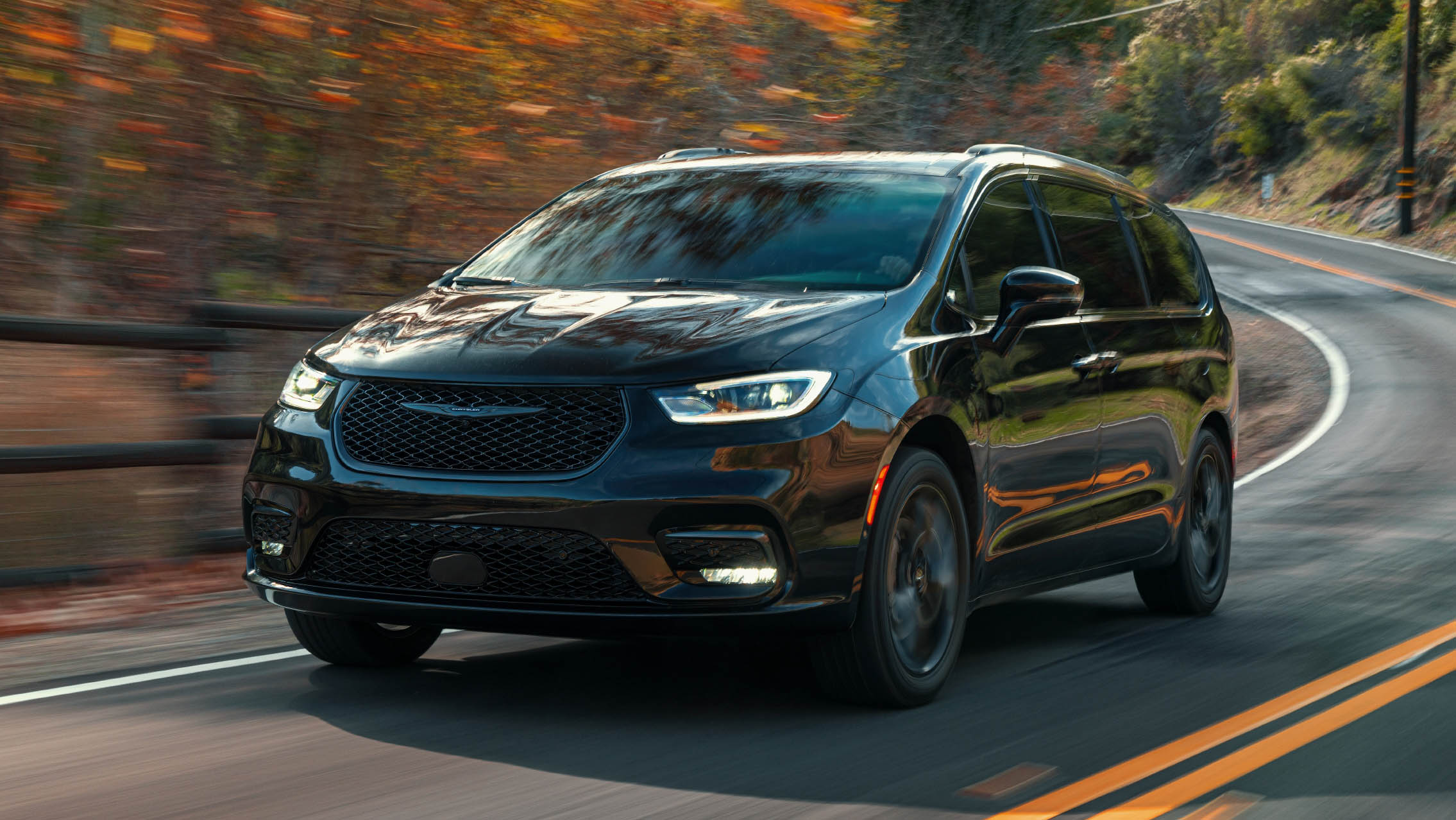Minivans are no longer as popular as they were at the close of the 20th century. Back in 2000, sales reached 1.3 million, but that number fell to just 306,000 last year.
Still, the four minivans currently on the market the Honda Odyssey, Toyota Sienna, Kia Sedona, and Chrysler Pacifica have remained dependable choices for families, even if their fuel efficiency tends to be average.
That’s all about to shift. Following several delays, the all-electric 2025 Volkswagen ID.Buzz is set to breathe new life into the minivan category by introducing battery power.
It’s not alone in this effort: three of today’s minivans now offer hybrid or plug-in hybrid options, leaving only the Honda Odyssey operating exclusively on gasoline.
But the ID.Buzz stands apart as the sole fully electric option, with no other all-electric minivans currently in development. Leaning into the retromod trend of reviving nostalgic models, it distinguishes itself with classic sliding side doors.
All of these minivans are solid in their category but which one is the best choice for ownership? Do the seasoned models or the innovative ones win out? Should drivers lean toward traditional combustion or newer electrified powertrains?
Our rankings take into account not just the purchase price, but also the cost of ownership, which tends to favor hybrid models.
Safety and cabin spaciousness are major factors, too, along with how easily kids can handle and adjust the seats to their needs. User-friendly tech and connectivity features are also high on the list.
From power-operated sliding doors to AWD systems paired with electric motors, these family vehicles are stepping up their game. Here’s how they stack up (with all prices including destination charges).
5. Honda Odyssey
- Price and trim range: EX-L ($43,315), Sport-L ($44,465), Touring ($48,005), Elite ($52,275)
- Powertrain: 280-hp 3.5-liter V-6 with a 10-speed automatic and front-wheel drive only
- MPG: 19 mpg city, 28 highway, 22 combined
- Standout features: Heated power front seats, sunroof, wireless smartphone charger standard
In recent years, Honda has streamlined the Odyssey lineup, and while the fifth-generation model last redesigned in 2018 still serves families well, it has begun to show its age.
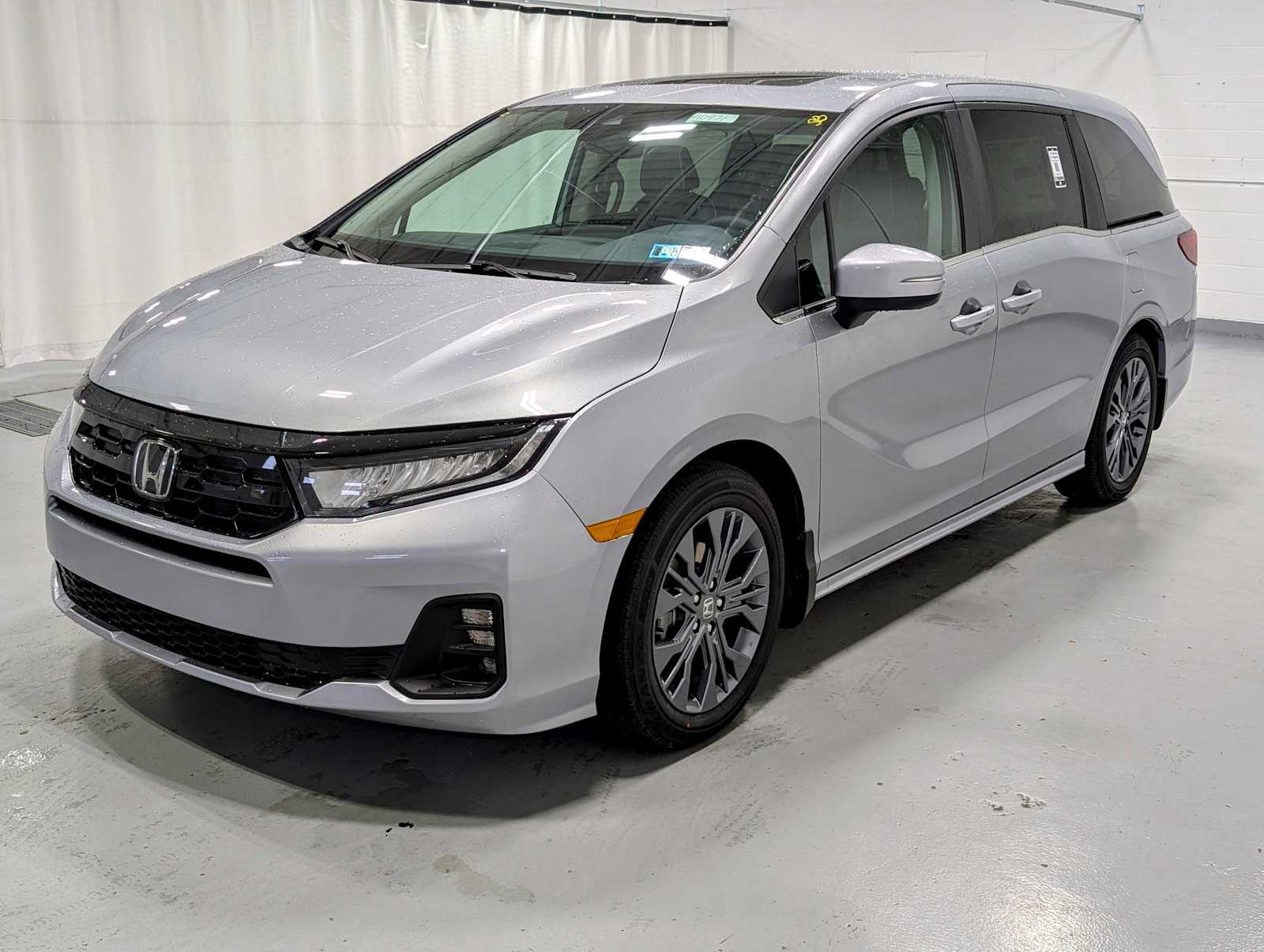
It’s the only minivan on the market without a hybrid powertrain, and it continues to offer only front-wheel drive. That said, it remains one of the best-handling minivans available, with responsive steering and a strong reputation for reliability a benefit of its largely unchanged formula over time.
However, its infotainment system and overall tech package lag behind competitors, leading to ongoing rumors that Honda may either retire the Odyssey after three decades or give it a hybrid update within the next year or two.
Honda’s recent push toward electrification is evident not only in the popularity of the CR-V Hybrid and Accord Hybrid but also in plans for a new electric three-row crossover set to launch in 2027.
Whether the Odyssey continues its journey remains to be seen we’ll see if the Odyssey’s journey continues, Homer.
Also Read: Top 10 Family-Friendly 7-Seaters of 2025
4. Chrysler Pacifica (tie)
- Price and trim range: Voyager ($41,690), Select ($44,145), Limited ($51,760), Pinnacle ($56,425)
- PHEV price and trim range: PHEV Select ($52,750), PHEV S ($58,995), PHEV Pinnacle ($61,975)
- Powertrain: 287-hp 3.6-liter V-6 with a 9-speed automatic; AWD adds $2,995
- Plug-in hybrid (PHEV) powertrain: 260-hp 3.6-liter V-6 with two electric motors and a 12.5-kwh (usable) battery pack with a CVT
- MPG: 19/28/22 mpg; 17/25/20 mpg with all-wheel drive
- PHEV MPG: 32 miles of electric range; the equivalent of 82 mpg with gas and electric power; 30 mpg combined without electric
- Standout features: Stow ‘N Go seats that fold into the floor (not on PHEV); available AWD (not on PHEV); luxurious options
When Chrysler introduced the plug-in hybrid Pacifica in 2018 one year after the gas-only Pacifica replaced the Town & Country it effectively created two distinct minivans under the same name.
The gas-powered Pacifica retains the brand’s game-changing Stow ‘N Go seats that fold into the floor in both the second and third rows and offers optional all-wheel drive.

Meanwhile, the Pacifica Hybrid stands as the only PHEV minivan on the market, capable of driving 32 miles purely on electricity ideal for daily family errands but lacks both second-row Stow ‘N Go functionality and the option for all-wheel drive.
This year, Chrysler has added a third variation to the lineup by reintroducing the Voyager as a lower-cost base model for retail customers, not just fleets. Still, with a starting price close to $42,000, it raises the question of how much value it really offers.
It carries the older Pacifica exterior styling, but comes equipped with modern features such as a standard 10.1-inch touchscreen with wireless smartphone compatibility and Stow ‘N Go seating in both rear rows.
It forgoes the high-end features available in pricier Pacifica trims that can push the total cost toward $60,000.
Importantly, the Pacifica PHEV qualifies for the full $7,500 federal EV tax credit, which means that, depending on your income, its price could end up being nearly the same as the gasoline version.
3. Toyota Sienna (tie)
- Price and trim range: LE ($40,635), XLE ($45,445), XSE ($48,090), Limited ($51,650), Woodland ($51,875), Platinum ($57,595); all-wheel drive costs $2,000 extra, though it’s standard on Woodland and only $760 on Platinum
- Powertrain: 245-hp 2.5-liter inline-4 with two motors (all-wheel drive adds a third motor to power the rear axle), a hybrid transmission, and front-wheel drive
- MPG: 36 mpg combined with front-wheel drive; 35 mpg combined with all-wheel drive
- Standout features: At least 35 mpg combined, available AWD
A full-time hybrid, the Sienna delivers a commendable 36 mpg combined with front-wheel drive and 35 mpg with all-wheel drive, making it one of the most fuel-efficient minivans available.
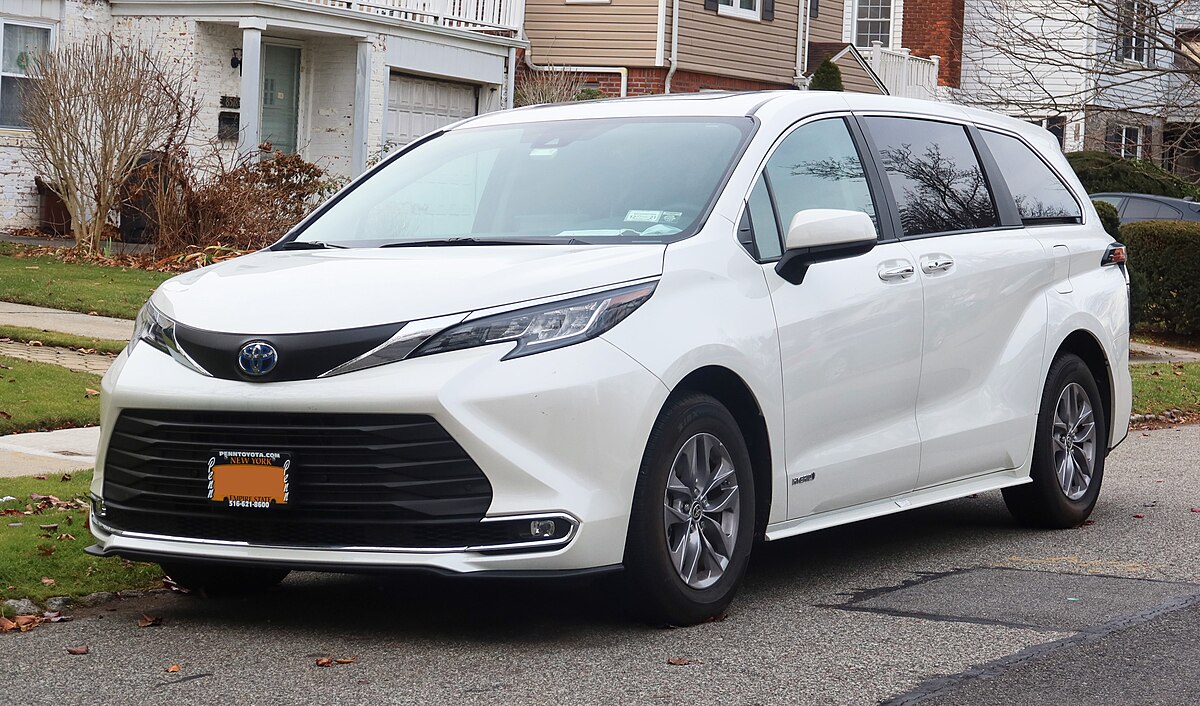
It covers the essentials for families who value practicality. However, its second-row seats are fixed in place and more difficult to remove than those in any competing minivan, limiting overall flexibility.
With six available trims and a wide range of features, there’s a Sienna to suit almost every preference.
While its 245-hp inline-4 and dual-motor hybrid setup (with a third motor added for all-wheel drive) doesn’t match the power of the V-6 engines in other vans, Toyota’s suspension tuning results in more composed handling and a stable ride, particularly at highway speeds.
Similar to the Pacifica, the Sienna can become pricey in its upper trims. And although it offers amenities like a built-in vacuum, cooler, footrests, and other upscale touches, the Sienna leans more toward practicality than luxury, no matter how it’s configured.
2. Kia Carnival
- Price and trim range: LX ($37,895), LXS ($39,895), EX ($42,095), SX ($46,995), SX Prestige ($51,995)
- Hybrid price and trims: Adds $2,000 to LXS, EX, SX, and SX Prestige versions
- Powertrain: 287-hp 3.5-liter V-6 paired with an 8-speed automatic transmission, front-wheel drive only
- Hybrid powertrain: 242-hp 1.6-liter turbocharged four-cylinder engine combined with a single electric motor, 6-speed automatic transmission, and front-wheel drive only
- MPG: 18/26/21 mpg (standard); 34/31/33 mpg (hybrid)
Standout features: Polished hybrid setup, clever storage design, strong value, 5-year/60,000-mile warranty
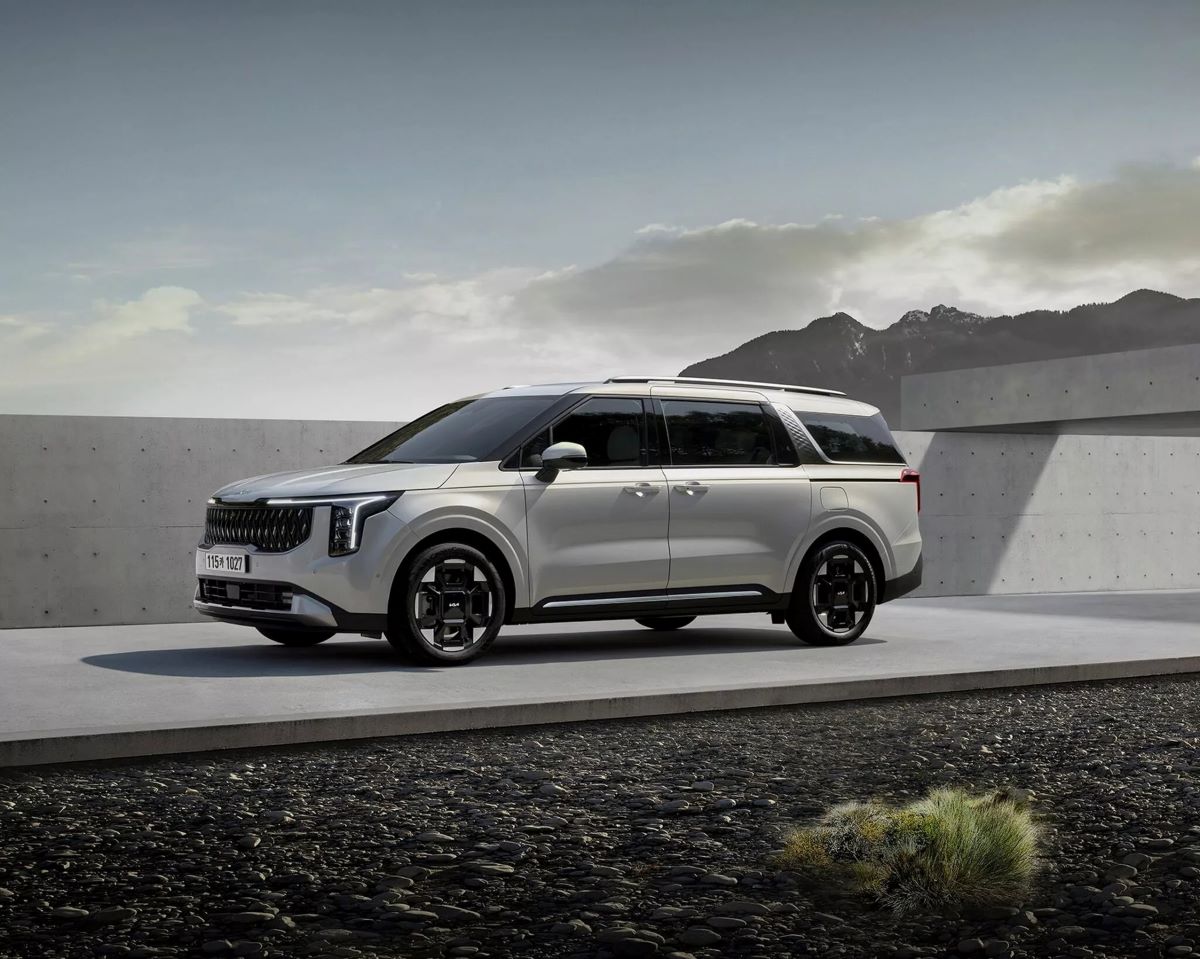
The introduction of the hybrid version turns the Carnival into more than just a fun ride it enhances it with notable improvements in efficiency and smoothness.
Although the updated Carnival doesn’t offer all-wheel drive or seats that fold into the floor, it handles nearly everything else with competence, especially in the hybrid variant.
It includes a user-friendly infotainment system, an excellent warranty package, and stands out as a strong value in its category without ever feeling like a cut-rate option.
The Kia minivan lineup is expanding this year with the introduction of the 2025 Carnival Hybrid, a more fuel-efficient option that closely resembles the nonhybrid 2025 Carnival, which also features refreshed styling. However, under the hood, significant changes have been made.
Kia has replaced the naturally aspirated V-6 engine and eight-speed automatic transmission with a hybrid powertrain that includes a turbocharged 1.6-liter four-cylinder engine, an electric motor, and a six-speed automatic transmission. Despite this shift to electrification, the front-wheel-drive layout remains unchanged.
Those seeking an all-wheel-drive hybrid minivan will still need to look at the Toyota Sienna. Otherwise, the Carnival Hybrid delivers the same practicality, comfort, and refinement as its gas-powered counterpart.
In a previous long-term test, we drove a 2022 Carnival for 40,000 miles and were impressed by its ability to carry both passengers and cargo with poise and ease. The Carnival’s innovative second-row seats, which recline fully and include footrests, are also available in the hybrid version.
Combined with a rear-seat entertainment system capable of streaming movies and TV shows, the Carnival Hybrid is well-equipped to keep kids entertained on long drives.
In our Hybrid Buyer’s Guide, the Carnival Hybrid ranks #3 among the best minivans. Leading the list is the Volkswagen ID.Buzz, starting at $61,545, followed by the Toyota Sienna at $40,635.
The Carnival Hybrid starts at $42,235, slightly above the standard Kia Carnival at $38,235. Rounding out the list are the Honda Odyssey at $43,670 and the Chrysler Pacifica at $44,445.
All versions of the Carnival Hybrid are powered by a turbocharged 1.6-liter four-cylinder engine combined with a 72-hp electric motor, driving the front wheels and producing a total of 242 horsepower.
While that’s slightly less than the 287 horsepower from the nonhybrid’s V-6 engine, the hybrid remains just as refined, capable, and enjoyable to drive.
During our test drive, we found the Carnival Hybrid’s performance to be smooth, with a quiet cabin and confident handling. The vehicle includes adjustable regenerative braking settings that vary how much the car slows when you lift off the accelerator.
On downhill grades, selecting higher levels of regeneration fills the battery more quickly, which can lead to the regenerative system temporarily deactivating once the battery is fully charged.
Also Read: Top 10 High-Performance Automatic Cars of 2025
1. Volkswagen ID. Buzz
- Price and trim range: Pro S ($61,545), Pro S Plus ($65,045), 1st Edition ($67,045); all-wheel drive option adds $4,500 to Pro S Plus and 1st Edition
- Powertrain: 282-hp single motor with rear-wheel drive or 335-hp dual-motor all-wheel drive; powered by a 91-kwh battery
- MPG (range): 234 miles with the single motor setup, 231 miles with the dual-motor version
- Standout features: Fresh retro-inspired styling, excellent visibility, fully electric, spacious second-row seating
Our TCC Rating may seem to favor flashy new entries that avoid traditional tailpipe emissions (see how we rate cars), but the comeback of the Volkswagen Bus as the electric ID. Buzz breathes new life into the minivan class while steering it toward the future.
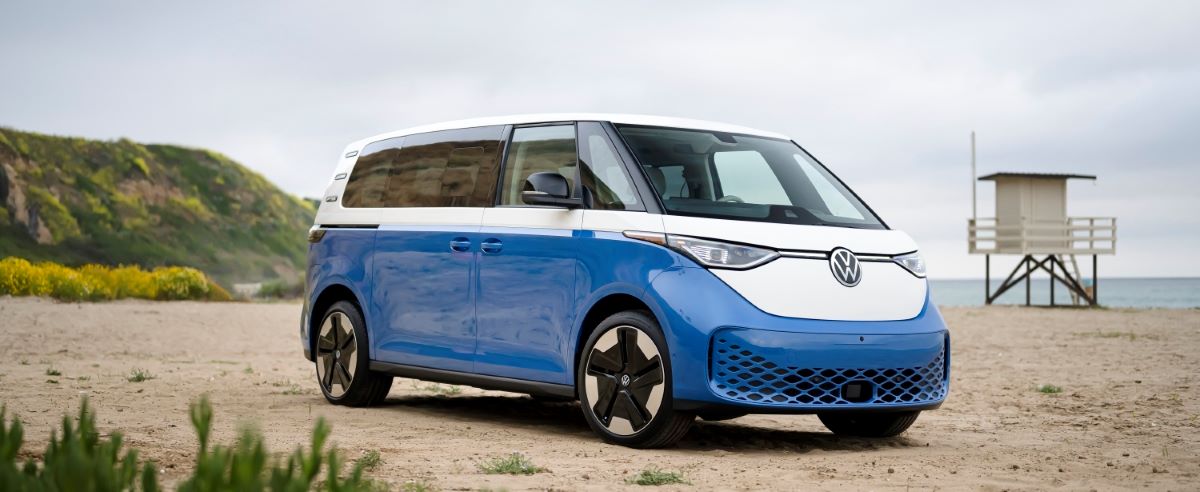
With its two-tone paint, extended wheelbase, and compact overhangs, it taps into nostalgia while delivering cutting-edge electric performance through its 91-kwh battery and either a single or dual-motor setup.
Although its range up to 234 miles is on the modest side for today’s EVs, the ID. Buzz is also the largest and heaviest minivan currently available.
It delivers instant torque that gives it respectable acceleration from a standstill, and the floor-mounted battery improves stability.
The cabin offers an expansive view, reminiscent of the original Bus’s design, and smartly placed storage like a dash shelf for the front passenger, a spot for phone charging, and a minimalist interior.
However, the climate controls embedded in the 12.9-inch touchscreen and touch-sensitive temperature sliders can be difficult to adjust precisely.
Because it’s manufactured in Germany, it doesn’t qualify for U.S. tax credits, making it pricier than many other minivans. Still, that’s the tradeoff for something so modern and remarkably clean.
The 2025 ID Buzz, evaluated here in its single-motor, rear-wheel-drive, midgrade Pro S Plus configuration, may look like a throwback to the era of flower power with its two-tone paint job, oversized VW logos, and decorative porthole trim on the D-pillars, but those retro styling elements are doing more than just evoking nostalgia.
The Buzz manages to strike a clever balance by appealing both to people whose first Volkswagen was the New Beetle and to those who remember driving the original.
Beyond its visual charm, it also drives better than any non-performance Volkswagen any of our editors—regardless of age—have experienced since the Dieselgate scandal. (Be sure to check out our First Drive of the all-wheel-drive model and our comparison test featuring four traditional minivans!)
This refined driving experience is made possible by the substantial revisions Volkswagen’s engineering team made to the company’s MEB platform—the same one used for the ID4.
These modifications were implemented both in the global version of the ID Buzz and in the longer, 10-inch-extended version tailored for the U.S. market.
The American-spec Buzz is equipped with a large 86-kWh net (91-kWh gross) battery and a significantly more powerful rear permanent-magnet motor, rated at 282 horsepower and 413 lb-ft of torque, which is a notable upgrade over the shorter European versions. The result is a van that drives more like a Tesla than any VW Transporter that came before it.

